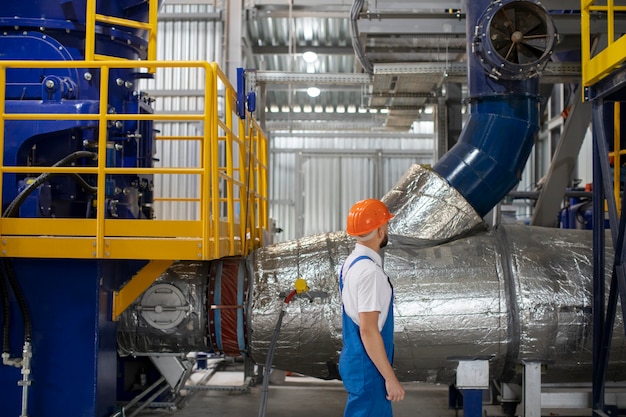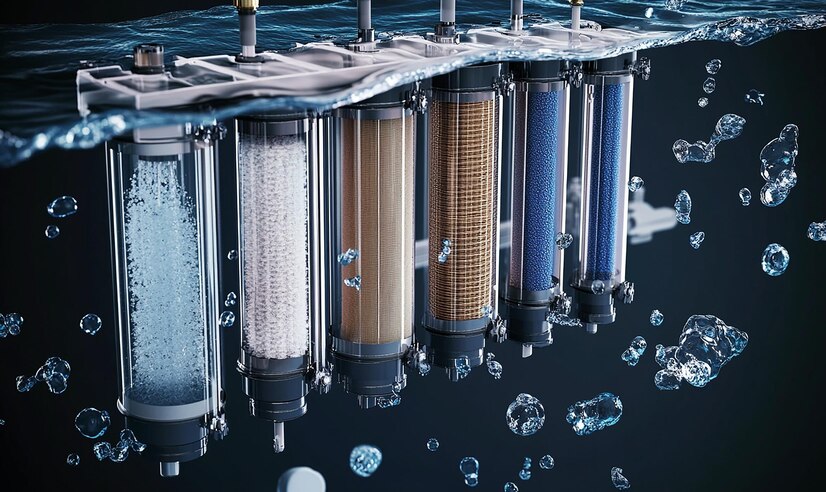Wastewater treatment has witnessed significant advancements over the years, particularly with the use of advanced filtration materials like PVDF (Polyvinylidene Fluoride) hollow fiber membranes. Among various technologies available, PVDF hollow fiber membranes have emerged as a leading choice due to their superior chemical properties, high filtration efficiency, and adaptability to challenging industrial and municipal conditions. One key application of these membranes is their integration into submerged membrane modules, particularly within membrane bioreactor (MBR) systems, which are highly effective for wastewater management.
PVDF Hollow Fiber Membranes: A Breakthrough in Filtration
These membranes are renowned for their exceptional performance in various filtration applications, particularly in wastewater treatment. These membranes are made of PVDF, a thermoplastic polymer with excellent chemical resistance and mechanical strength. The material’s durability makes it resistant to degradation from exposure to harsh chemicals, high temperatures, and oxidizing agents, which are common in wastewater environments. This resilience ensures that these membranes can perform reliably for extended periods, even in industrial effluents with aggressive compositions.
Primem is a leading manufacturer of both homogeneous and reinforced PVDF hollow fiber membranes. A homogenous membrane is uniform throughout, and a reinforced membrane has additional materials for strength for enhanced durability. These two membranes have common characteristics: these have high porosity and antifouling properties and have high flux rates. Antifouling is especially a great feature since it eliminates clogging, necessitates reduced maintenance requirements, and prolongs the service life of the membrane. Additionally, the high flux rates of these membranes—ranging from 600 to 1200 LMH (Liters per Square Meter per Hour) depending on the membrane type—allow for efficient filtration, leading to lower energy consumption and operational costs.
The other advantage is that these membranes have low operational pressure. They work at a mere 0.05 MPa, which provides a more energy-friendly solution to filtration without involving any compromise in performance. More importantly, these membranes work efficiently in a wide temperature range from 5 to 40°C and in the pH range of 2 to 10, thus ensuring applicability to all types of wastewater composition.

Key Parameters
These membranes are characterized by their structural dimensions and performance metrics, which vary based on the membrane type:
– Nominal Pore Size: Ranges from 0.08 µm for homogeneous membranes to 0.2-0.3 µm for reinforced membranes. The smaller pore size is ideal for capturing fine particles, while the larger pores can handle higher flux rates.
– Outer Diameter (OD) and Inner Diameter (ID): The OD and ID of the membranes differ based on whether they are reinforced or homogeneous. Reinforced hollow fiber membranes typically have a larger OD (2.0 mm) and ID (1.0 mm) compared to homogeneous membranes (OD of 1.3 mm and ID of 0.7 mm).
– Elongation: Homogeneous membranes have a higher elongation percentage (300%) than reinforced membranes (82%), indicating more flexibility in the former.
Submerged Membrane Modules: MBR Optimisation
It is the submerged membrane modules, particularly those equipped with PVDF hollow fiber membranes that are at the heart of the MBR systems. These are combinations of conventional biological treatments with membrane filtration, offering a more sophisticated solution for wastewater treatment. The membrane being submerged directly into the wastewater permits filtration to occur while letting the water pass through. This integration ensures superior water quality, meeting the stringent standards for municipal and industrial reuse.
Primem provides standardized and customized submerged membrane modules according to the clients’ needs. The standardized types under the designation as SSM and DSM are categorized into different surface areas, heights, and thickness for varied sizes and flow requirements within the system. For instance, the SSM10R and SSM20H have membrane areas of 10 and 20 square meters, respectively, that differ in height and thickness based on the type of the structure.
The use of double permeate port designs, such as in the DSM20H and DSM30R models, allows for more efficient permeate collection, especially in larger-scale operations. These modules fabricated from reinforced hollow fiber membranes can handle more demanding conditions due to their added strength and resistance to fouling.
Conclusion
PVDF membranes, with their superior chemical resistance, durability, and high flux rates, have transformed wastewater treatment technologies. When integrated into submerged membrane modules, particularly in MBR systems, they offer an advanced and sustainable solution for industrial and municipal wastewater challenges. Primem’s expertise in producing both reinforced and homogeneous PVDF hollow fiber membranes ensures that wastewater treatment facilities can rely on long-lasting, efficient, and cost-effective membrane solutions.

